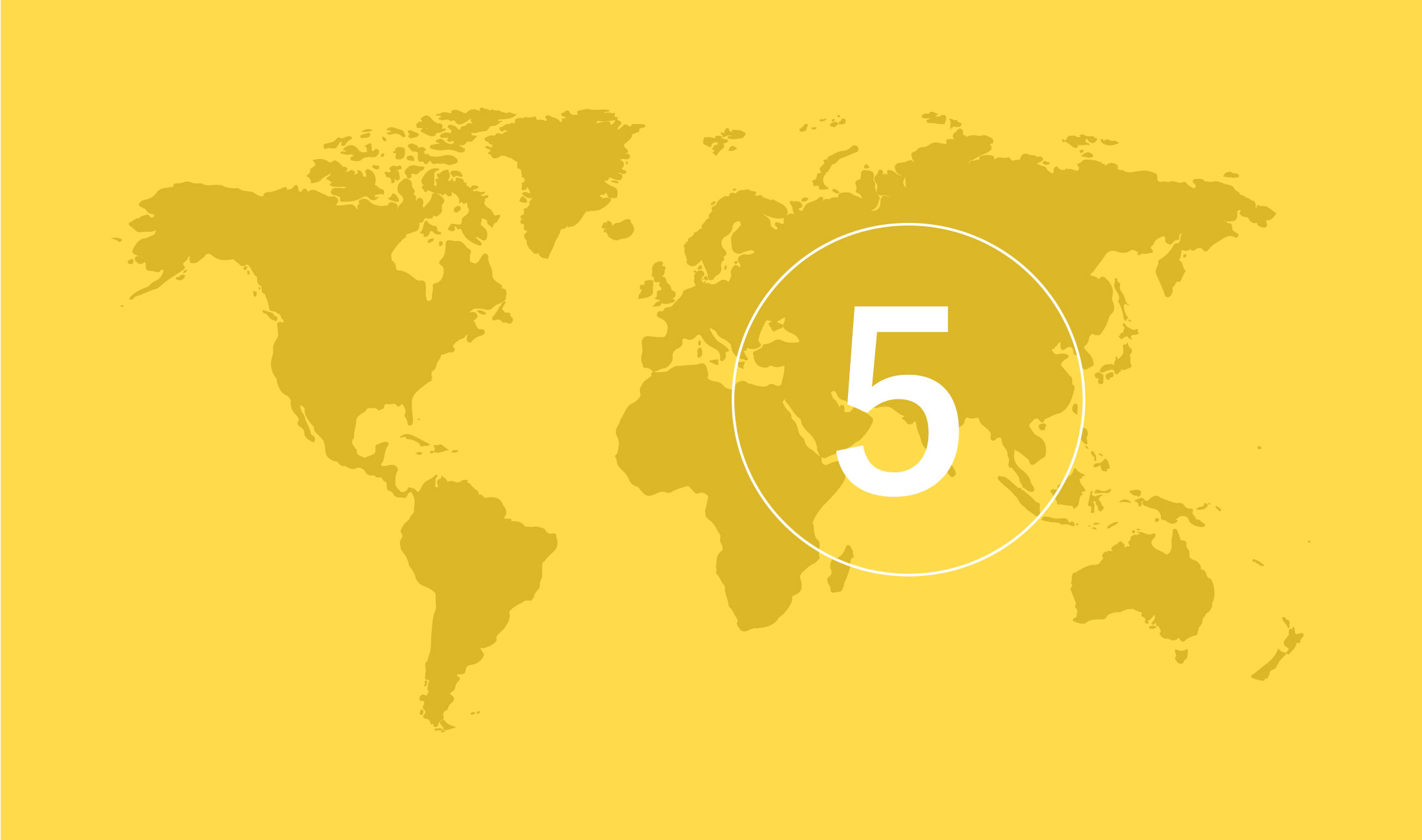
Ivory Coast, The
Category
5
- 0
- 1
- 2
- 3
- 4
- 5
- 6
- 7
| Risk type | Short | Long |
|---|---|---|
| Sovereign |

|

|
| Public |

|

|
| Bank |

|

|
| Corporate |

|

|
The icons indicate EKN's risk assessment.

No policy established

Normal risk assessment

Restrictive risk assessment

Normally off cover

OECD or EU countries
Country risk analysis
Country Risk Analysis of the Ivory Coast (Côte d'Ivoire)
The latest Country Risk Analysis of the Ivory Coast was issued in October 2025.
Background
Ivory Coast’s economy has undergone rapid transformation since the end of the civil war in spring 2011. Over the past decade, GDP per capita has grown by an average of just over three per cent per year in real terms – remarkably high in a regional context. This has contributed to fiscal stability.
In addition, Ivory Coast is a member of the West African CFA franc zone (WAEMU), in which the currency is pegged to the euro and guaranteed by France. The monetary union promotes macroeconomic stability through low inflation, relatively limited exchange rate fluctuations, and reduced transfer risk within the zone as well as vis-à-vis hard currencies. WAEMU membership also allows the government to borrow in CFA francs on the regional capital market, which reduces refinancing risk compared with relying solely on the domestic market.
Growth is largely driven by natural resources such as agriculture, gold and oil, although an emerging food-processing and textile industry also contributes. The economy is therefore sensitive to fluctuations in world market prices for gold, cocoa, coffee, and oil. Ivory Coast is the world’s largest producer of cocoa, a market that has faced challenges in recent years. Gold has instead become one of the country’s most important export products, benefiting from high prices and rising production.
Domestic political conflict remains the greatest threat to the country’s positive risk trajectory. Ivory Coast’s modern history has been marked by political conflict and bloodshed, and the country remains divided. The civil wars of 2000–2007 and 2010–2011 severely damaged the economy and led to several episodes of sovereign default, the most recent in 2011. Significant military uprisings occurred in both 2014 and 2017. The underlying political fault lines persist, while low GDP per capita and widespread poverty continue to heighten the risk of social unrest.
Alassane Ouattara (born 1942) has governed Ivory Coast since 2010 and is running for a fourth term – a controversial move, as the constitution allows only two. Elections will be held on 25 October 2025.
Climate change has a direct bearing on country risk due to the large agricultural sector, the high degree of urbanisation in coastal areas, and the generally low-income levels. According to the University of Notre Dame’s ND-GAIN Index, the country ranks among the world’s most climate-vulnerable (134th out of 187 in 2023). Ivory Coast is particularly exposed to storms. The IMF identifies a shock in the form of a natural disaster as the greatest external threat to fiscal sustainability. In addition, the oil and gas industry plays a key role in sustaining growth, implying certain transition risks.
Ouattara on course for a fourth term
The recent turbulence in global trade policy is unlikely to derail Ivory Coast’s economy. Even if the United States continues to impose 15 per cent tariffs on the country’s exports, the impact on the economy will be limited, as only around four per cent of goods exports go to the US. Export revenues from cocoa are expected to decline – another setback for the sector – but this will be offset at the macro level by rising gold exports.
In the coming years, the economy is projected to continue expanding by an average of just over six per cent per year. Price forecasts for the country’s export commodities are favourable, and, combined with increased savings, this provides solid growth prospects in the medium term. Over the next few years, Ivory Coast’s national savings are expected to rise to around 25 per cent of GDP – a high level compared with other African economies, which often have very low savings rates. Sound macroeconomic policies, in line with WAEMU stability targets, mean that inflation is expected to decline towards two per cent in 2026–2027.
On the external side, the current account deficit continues to narrow, driven by a significantly improved trade balance. Foreign direct investment has risen to the equivalent of 3–4 per cent of GDP, supported by the growing oil and gas industry. The common reserve within the WAEMU currency union, which came under pressure during the pandemic, has now recovered to cover nearly five months of imports. The outlook for Ivory Coast’s external payment capacity therefore remains positive.
Public finances have also benefited from WAEMU membership during the crises of recent years. Ivory Coast is one of the few countries likely to meet the union’s fiscal deficit target of a maximum of three per cent in 2025. Strong growth combined with a declining fiscal deficit means that public debt is expected to fall towards 56 per cent of GDP by 2026 – roughly in line with the average for country risk category 5.
The government continues to implement its IMF programme as planned. The third review was completed in spring 2025, with all targets and reforms assessed as achieved or on track. According to the IMF, the risk of payment difficulties is moderate, though the country retains limited capacity to absorb external shocks. As in most African economies, low revenue mobilisation remains a key fiscal weakness. A large informal sector and weak tax administration mean that tax revenues amount to just over 15 per cent of GDP, compared with the WAEMU benchmark of 20 per cent.
Public debt therefore corresponds to nearly 350 per cent of revenues, and around 16 per cent of budget income goes to interest payments – a high ratio. A central objective of the IMF programme is to achieve revenue-based fiscal consolidation, and tax receipts have risen, albeit slowly.
Ivory Coast’s ability to avoid politically destabilising unrest remains the most important factor for the country’s future economic development. The exclusion of Laurent Gbagbo – barred from running for the presidency due to a 2018 conviction – and Tidjane Thiam – excluded because of dual nationality – led to large but peaceful protests in August 2025. The divisions between north and south, and between urban and rural areas, have not disappeared since the years of civil war.
The main criticism from the opposition is that growth in GDP per capita has not benefited the population as a whole, and that the country is moving in a less democratic direction. With many of the main antagonists from the pre-war era now out of politics, either due to age or political manoeuvring, the domestic political situation is less explosive than it was fifteen years ago.
Ouattara’s three presidential terms have been marked by economic progress and political stability, which means he still enjoys a degree of popularity. Protests are likely to follow in the event of another electoral victory for Ouattara, but the fear of a return to economic chaos and civil war has a moderating effect on domestic politics.
Ivory Coast’s institutions continue to strengthen, and low inflation has enabled Ivorians to maintain their purchasing power to a greater extent than in many other countries on the continent. Although Islamist attacks have occurred in the north, the government has so far managed – through military presence and social investment – to prevent the al-Qaeda-affiliated group JNIM from establishing itself.
During 2025, French troops withdrew from Ivory Coast. In addition, the United States has cut much of its aid to the country, while JNIM has advanced its positions in the southern parts of Mali and Burkina Faso. This could lead to a deterioration in the security situation in Ivory Coast as well, although so far there are few signs of this. The baseline scenario remains that politically transformative unrest can be avoided.
Business environment
Strong growth, low inflation and a stable currency create the foundations for a favourable business climate in Ivory Coast. High growth is central to the country’s stability, which makes government policy comparatively business-friendly in a regional context. The economy is among the ten largest in Africa, and a decade of macroeconomic and political stability has set the country on course to become a regional financial hub.
Over the past decade, Ivory Coast’s ranking in the World Bank’s Worldwide Governance Indicators has improved significantly, a development that contributes positively to the business environment. From being among the weakest tenth of all countries in the early 2010s, the country now ranks just below the global average. In particular, government effectiveness and rule of law have strengthened. Nevertheless, substantial weaknesses persist across all dimensions, including corruption. The high level of corruption by global standards affects the legal system, which remains weak. Legal proceedings and bankruptcy cases can therefore be time-consuming and outcomes unpredictable.
EKN’s business assessment also takes into account the risk of negative impacts on human rights (HR). EKN focuses on the potential impacts arising from the operations in which the exported goods will be used. In this context, issues such as working conditions, child and forced labour, excessive use of force by security personnel, indigenous rights and land rights are of particular importance.
According to Maplecroft’s Human Rights Index, Ivory Coast shows a significantly higher risk profile across all these dimensions compared with OECD high-income countries. Relative to countries at a similar income level, however, Ivory Coast’s scores are broadly in line with peers.
EKN’s policy
EKN classifies Ivory Coast in country risk category 5 and applies normal risk assessment for sovereign risks, banks, and corporates. This means there are no predefined requirements in the country policy concerning the issuance of guarantees for these buyer categories. As in most other African countries, EKN is closed for direct risk exposure to other public buyers such as municipalities, cities, and government agencies. For transactions involving such buyers, a letter of credit, bank guarantee, or sovereign guarantee is required.
EKN’s commitment and experience
EKN’s portfolio mainly consists of sovereign risks in the form of a bus project (approximately SEK 1 billion) and a water treatment project (around SEK 2 billion). In addition to water treatment and transport, EKN also has exposure in the mining sector, pulp and paper industry, and telecommunications.
Overall, the payment record is good. Delays and outstanding claims mainly relate to transport transactions, and the payment issues are linked to the buyer companies rather than to country risk. In one case, the buyer was severely affected by border closures during the pandemic. Payment experience among other OECD export credit agencies remains positive, according to the latest reports from peer institutions.
More for companies that want to export to The Ivory Coast

EKN's guarantees
EKN's guarantees reduce the risk of payment defaults and help banks support businesses. Which guarantee suits your needs?
EKN's guarantees
Guarantee guide
Are you unsure which guarantee is the best fit for your specific transaction? Try our guarantee guide.
Guarantee guide